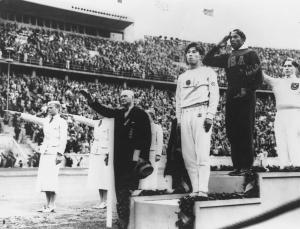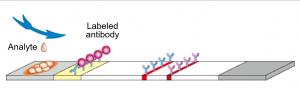How does color affect us? Every color has its own image. When we see the color yellow, we think of warmth. When we see the color green, we feel fresh. When we see blue, we think of purity, cold and depth. We associate the color blue with water and the sea. In the case of food, we usually think of green, yellow, red, brown, and so on. However, we rarely come up with blue. Is there any special reason that people don’t think of the color blue as related to food?
In general, red colored food stimulates appetite. So, in the case of food advertisements, advertisers prefer to use the color red in their ads. Also restaurants use red in their store interior. For example, McDonalds mainly uses red in their store design and ads. It makes people think of sweet things. Pink gives vividness and cheerfulness. It stimulates a person’s appetites the most. The color orange makes people forget about their satiety. When people see oranges juice, they feel like drinking it. Yellow gives off a warm mood and pleasure at the same time. This color helps people recover their appetite in summer days. White has both freshness and cleanness. It also gives people a taste of salt. We usually use white plates because it increases the desire to eat more. In contrast, blue, green, purple, and black have opposite effects of those previous colors. In particular, blue is a symbol of calmness. Unlike the white plates, when we see food on blue plates, it looks tasteless. Because of this, cold and dark colors relax someone’s mind and decreases the idea of freshness, which is incompatible with our appetite.
Let’s see these pictures to understand the visual effects of color more vividly.
When we eat food, we taste several kinds of flavors. Commonly, many people think that palate is the main determinant of flavor. However, when we taste something, other senses such as sound and smell are also used. In fact, I have read that visuals influence taste a lot (87% of flavor), while palate only accounts for 1% of the flavor. In short, taste can be felt through the idea acquired by our eyes.
According to the Charles Spence, a psychologist in Oxford University, the sense of sight and smell play a decisive role in deciding the flavor. Half of our brain is used to deal with the information related to the sense of seeing. A small part of our brain is for the palate. That is the reason why the color of the food is important. Let’s understand the process of tasting food. The nerves in taste buds on the tongue detect five flavors- - bitterness, sweetness, sourness, salty taste and umami. Then the scent is distinguished by olfactory cells in the nose. Our brains piece together the information from our organs and perceive the flavor each food has. When the brain perceives the food, the vision contributes a lot. Seeing food stimulates the hypothalamus’ activities, which has charge of controlling our appetite.
In terms of evolution theory, food is closely related to a human being’s survival. Therefore, it can be said that an immediate response happens when people see the color of the food. It is possible to associate the color with taste as a synesthetic phenomenon. From ancient times, people have experienced that purple and blue reminds them of poisons, bitter tastes and fruits before ripening and bruises.
If you look at the blue pictures and your appetite remains the same, the liver may become weak. Yin-Yang and the Five Elements theory of Oriental Medicine has set the colors of each organ. When an organ’s capability has lower function than before, it tries to find food of that color and replenish its energy. Blue represents the liver and gall bladder, red for the heart and small intestine, yellow for the stomach, white for lungs and the colon, and black for the kidneys and bladder.
These days, people are interested in shaping their bodies. When our central nervous system is stimulated because of the stress from a diet, a fake appetite happens. The color blue can solve this problem and even refrain us from the desire by helping rational thinking. According to the appetite pyramid, our appetite responds actively to red and orange, but appetite responses dramatically decreases when encountering green, blue and purple. The colors of plates and food can be a strong influence to our taste. So, using the effects of colors wisely can help people to successfully control their appetite. People who have lower levels of physical exercise should put red or yellow things around them as these colors make people move by stimulating people’s activeness. If someone sits down in front of the computer for a long time, use a blue background for the computer screens. It can refrain someone from urges in their appetite. Some people use blue tablecloths and rooms or seeing photos related to blue before eating to decrease their size of meals.
A fat person can suffer from several problems like diabetes and cardiac diseases. Moreover, people who gain weight lose their confidence and this can cause depression and other mental illnesses. It is desirable to control one’s appetite by oneself, but it is not that easy. Although someone’s willpower is the most important factor to have a successful diet, the color therapy can be helpful to do an easy, effective and persistent diet. These days, color therapy is actively used not only for psychotherapy, but also for diet. Eating small amount of food is necessary for keeping in shape. But the more important thing is that we should have a regular life pattern to make our hormones move amicably. As we see above, color can improve our ability to adjust our appetite. How about using color therapy for the healthier life?
Han Suji suzyhan96@gmail.com
<저작권자 © 홍익대영자신문사, 무단 전재 및 재배포 금지>





